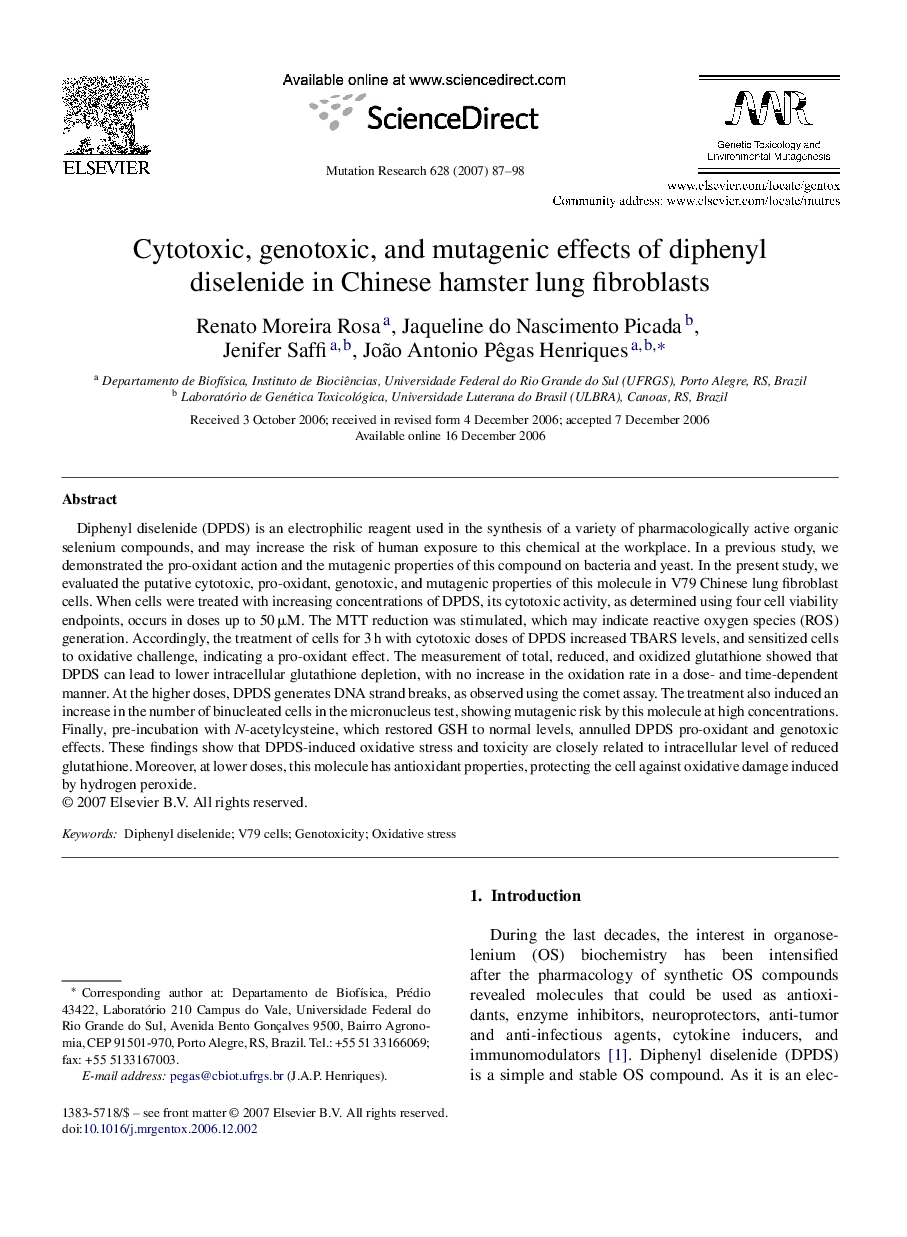| کد مقاله | کد نشریه | سال انتشار | مقاله انگلیسی | نسخه تمام متن |
|---|---|---|---|---|
| 2149221 | 1089607 | 2007 | 12 صفحه PDF | دانلود رایگان |

Diphenyl diselenide (DPDS) is an electrophilic reagent used in the synthesis of a variety of pharmacologically active organic selenium compounds, and may increase the risk of human exposure to this chemical at the workplace. In a previous study, we demonstrated the pro-oxidant action and the mutagenic properties of this compound on bacteria and yeast. In the present study, we evaluated the putative cytotoxic, pro-oxidant, genotoxic, and mutagenic properties of this molecule in V79 Chinese lung fibroblast cells. When cells were treated with increasing concentrations of DPDS, its cytotoxic activity, as determined using four cell viability endpoints, occurs in doses up to 50 μM. The MTT reduction was stimulated, which may indicate reactive oxygen species (ROS) generation. Accordingly, the treatment of cells for 3 h with cytotoxic doses of DPDS increased TBARS levels, and sensitized cells to oxidative challenge, indicating a pro-oxidant effect. The measurement of total, reduced, and oxidized glutathione showed that DPDS can lead to lower intracellular glutathione depletion, with no increase in the oxidation rate in a dose- and time-dependent manner. At the higher doses, DPDS generates DNA strand breaks, as observed using the comet assay. The treatment also induced an increase in the number of binucleated cells in the micronucleus test, showing mutagenic risk by this molecule at high concentrations. Finally, pre-incubation with N-acetylcysteine, which restored GSH to normal levels, annulled DPDS pro-oxidant and genotoxic effects. These findings show that DPDS-induced oxidative stress and toxicity are closely related to intracellular level of reduced glutathione. Moreover, at lower doses, this molecule has antioxidant properties, protecting the cell against oxidative damage induced by hydrogen peroxide.
Journal: Mutation Research/Genetic Toxicology and Environmental Mutagenesis - Volume 628, Issue 2, 2 April 2007, Pages 87–98